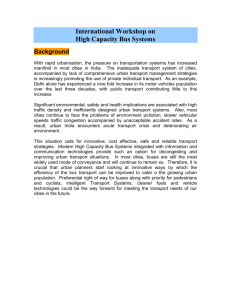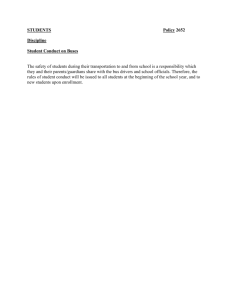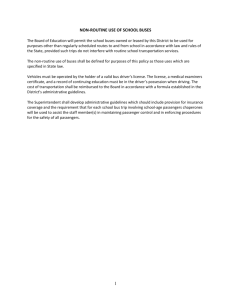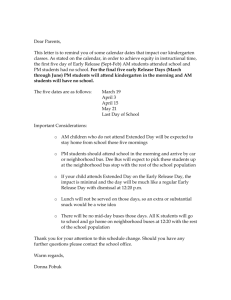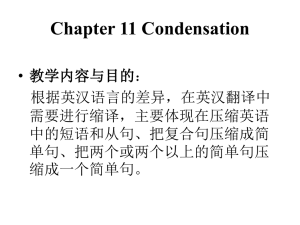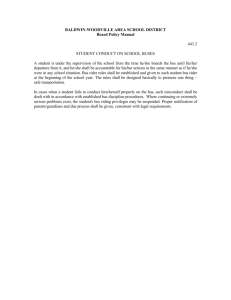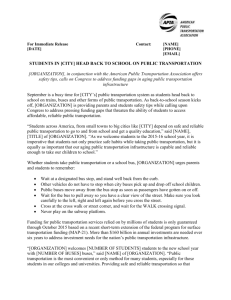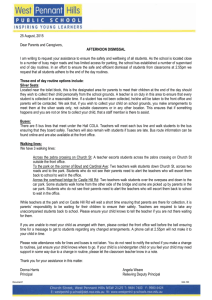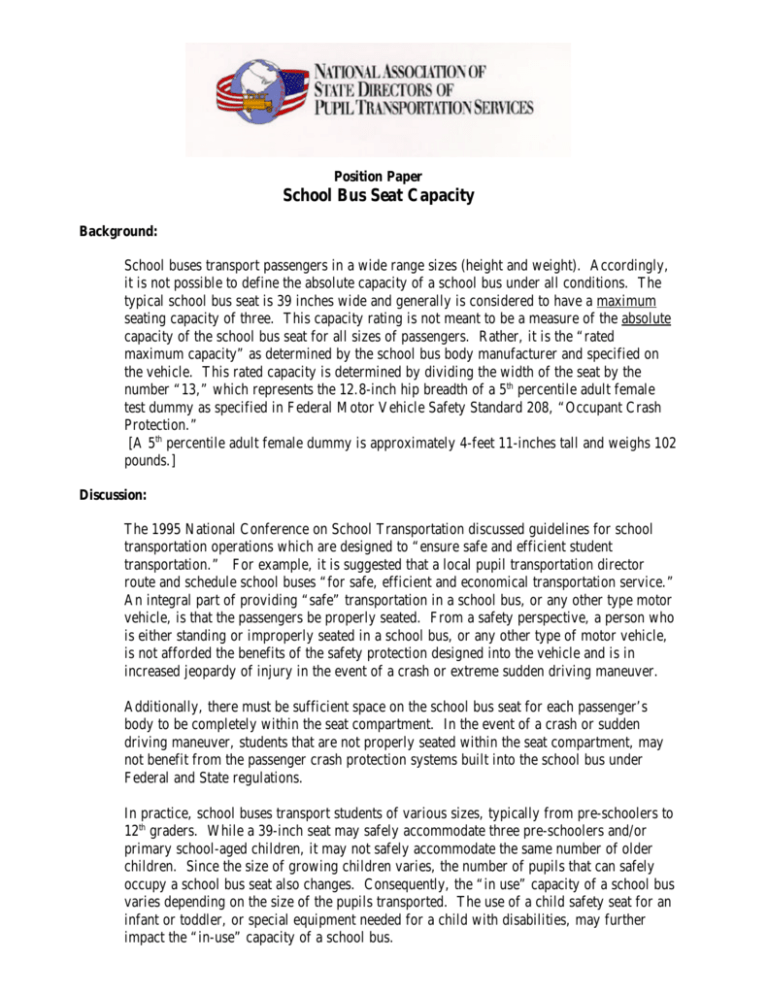
Position Paper
School Bus Seat Capacity
Background:
School buses transport passengers in a wide range sizes (height and weight). Accordingly,
it is not possible to define the absolute capacity of a school bus under all conditions. The
typical school bus seat is 39 inches wide and generally is considered to have a maximum
seating capacity of three. This capacity rating is not meant to be a measure of the absolute
capacity of the school bus seat for all sizes of passengers. Rather, it is the “rated
maximum capacity” as determined by the school bus body manufacturer and specified on
the vehicle. This rated capacity is determined by dividing the width of the seat by the
number “13,” which represents the 12.8-inch hip breadth of a 5th percentile adult female
test dummy as specified in Federal Motor Vehicle Safety Standard 208, “Occupant Crash
Protection.”
[A 5th percentile adult female dummy is approximately 4-feet 11-inches tall and weighs 102
pounds.]
Discussion:
The 1995 National Conference on School Transportation discussed guidelines for school
transportation operations which are designed to “ensure safe and efficient student
transportation.” For example, it is suggested that a local pupil transportation director
route and schedule school buses “for safe, efficient and economical transportation service.”
An integral part of providing “safe” transportation in a school bus, or any other type motor
vehicle, is that the passengers be properly seated. From a safety perspective, a person who
is either standing or improperly seated in a school bus, or any other type of motor vehicle,
is not afforded the benefits of the safety protection designed into the vehicle and is in
increased jeopardy of injury in the event of a crash or extreme sudden driving maneuver.
Additionally, there must be sufficient space on the school bus seat for each passenger’s
body to be completely within the seat compartment. In the event of a crash or sudden
driving maneuver, students that are not properly seated within the seat compartment, may
not benefit from the passenger crash protection systems built into the school bus under
Federal and State regulations.
In practice, school buses transport students of various sizes, typically from pre-schoolers to
12th graders. While a 39-inch seat may safely accommodate three pre-schoolers and/or
primary school-aged children, it may not safely accommodate the same number of older
children. Since the size of growing children varies, the number of pupils that can safely
occupy a school bus seat also changes. Consequently, the “in use” capacity of a school bus
varies depending on the size of the pupils transported. The use of a child safety seat for an
infant or toddler, or special equipment needed for a child with disabilities, may further
impact the “in-use” capacity of a school bus.
Page 2.
It is important to consider the size of the passengers on each school bus route when
determining the “in-use” capacity of a school bus. It is recognized that at certain times, for
example at the beginning of a school year, it may not be possible to know exactly how
many students will arrive at the school bus stops on a route seeking transportation to
and from school. For that reason, there may be instances where overcrowding exists
temporarily on some school buses. In such situations, efforts should be made to provide
safe seating to all school bus passengers in a timely and efficient manner, so that during
regular operations all passengers are safely seated.
Highway Safety Guideline #17, “Pupil Transportation Safety,” as issued by the National
Highway Traffic Safety Administration, states:
“(1)
Standing while school buses and school-charter buses are in motion should
not be permitted. Routing and seating plans should be coordinated so as to
eliminate passengers standing when a school bus or school-charter bus is in
motion.
(2)
Due to variations in sizes of children of different ages, States and school
districts should exercise judgment in deciding how many students are
actually transported in a school bus or school-charter bus.
(3)
There should be no auxiliary seating accommodations, such as temporary or
folding jump seats in school buses.”
Conclusions:
The National Association of State Directors of Pupil Transportation Services believes all
children riding in school buses, or other buses used to transport pupils to and from school
or school-related activities, should be properly and safely seated facing forward. In
addition, the State Directors Association believes there should be adequate space on the
seat for the child to be seated completely within the seating compartment.
Accordingly, the State Directors Association believes States should establish guidelines for
determining the “in-use” capacity of school buses and other buses used to transport pupils
to and from school and school-related activities. The State Directors Association further
believes States should enact legislation to prohibit standees during the regular operation of a
school bus or other bus used to transport pupils to and from school or school-related
activities.
Issued: October 1999
© 1999 National Association of State Directors of Pupil Transportation Services. All rights reserved.

